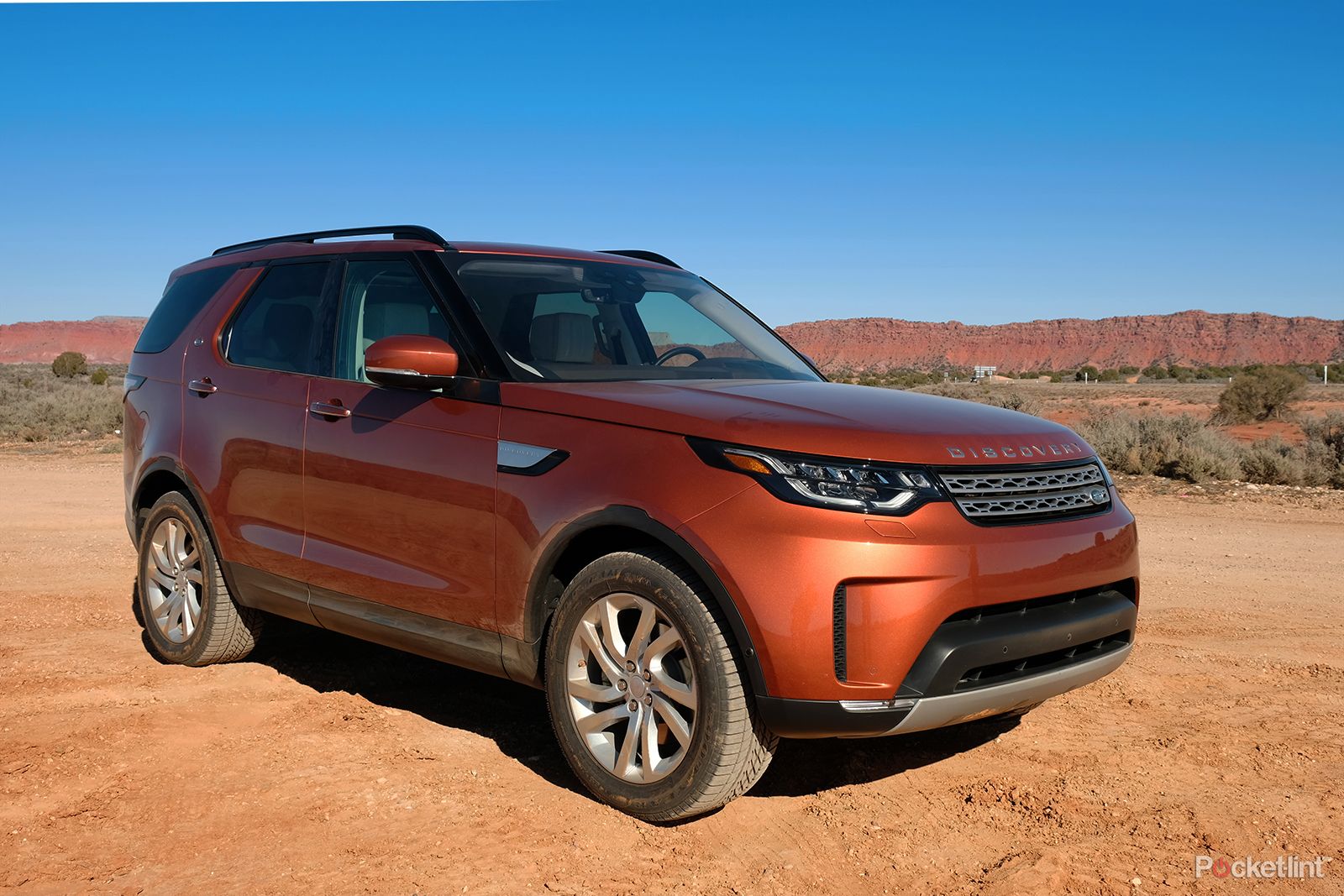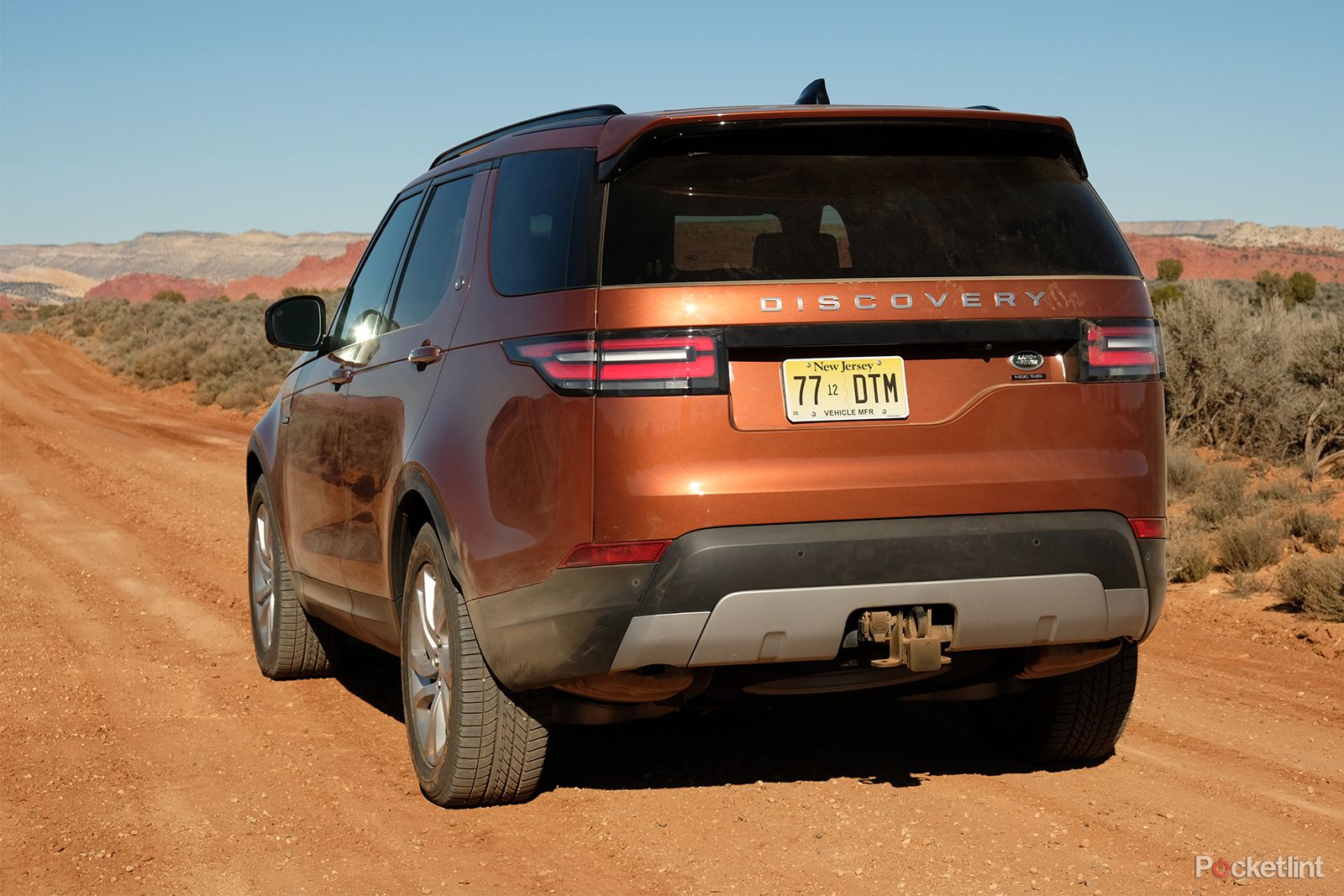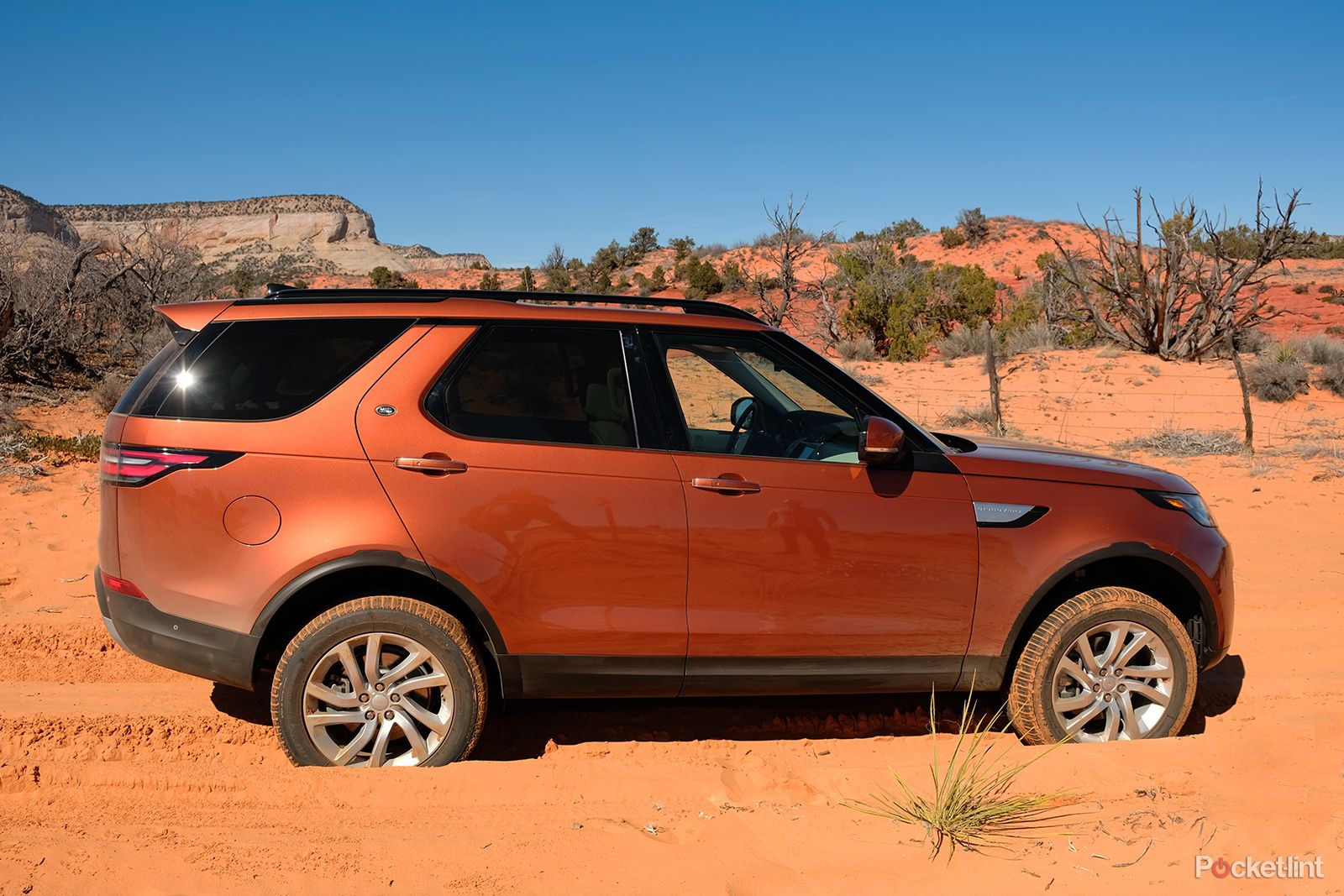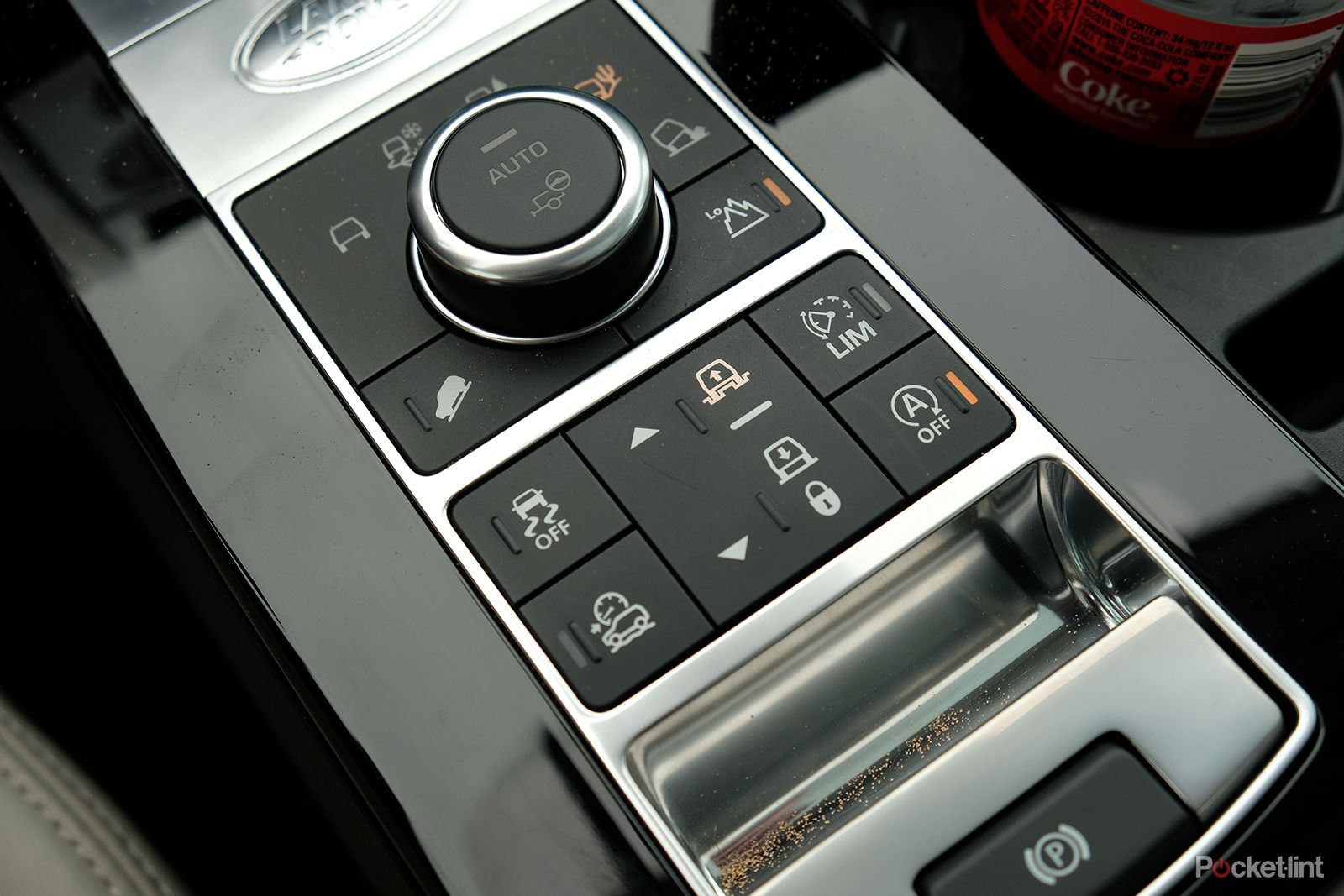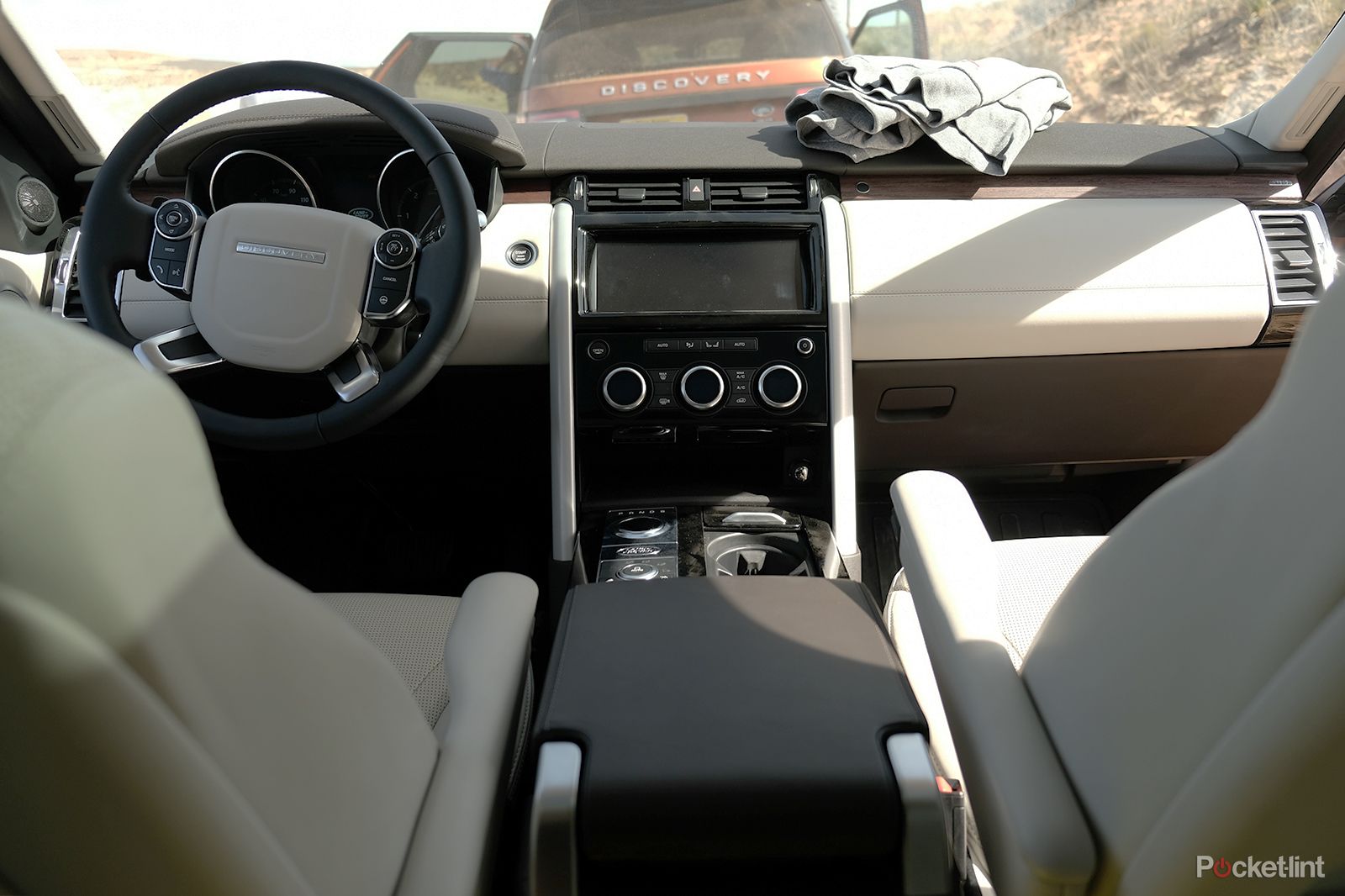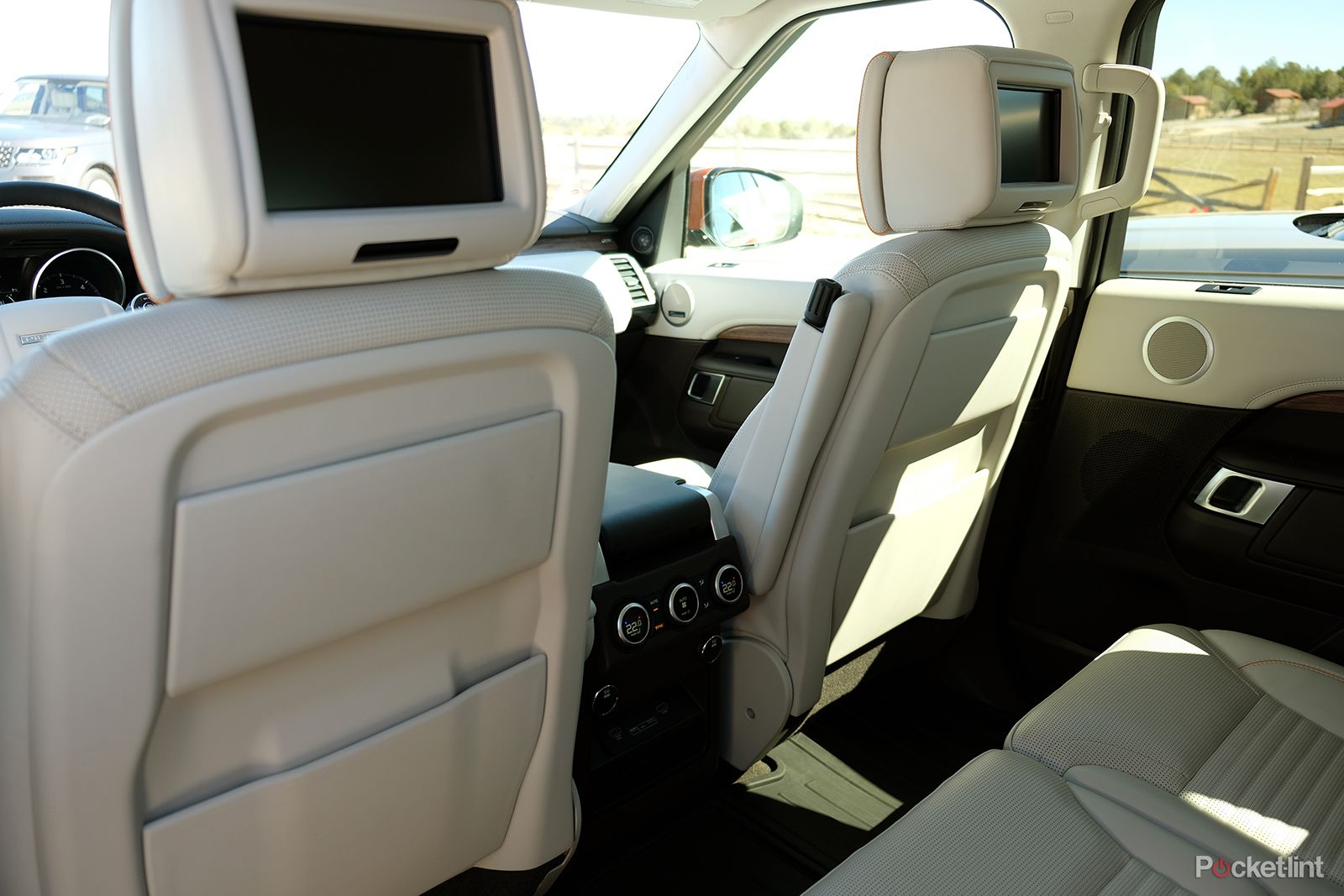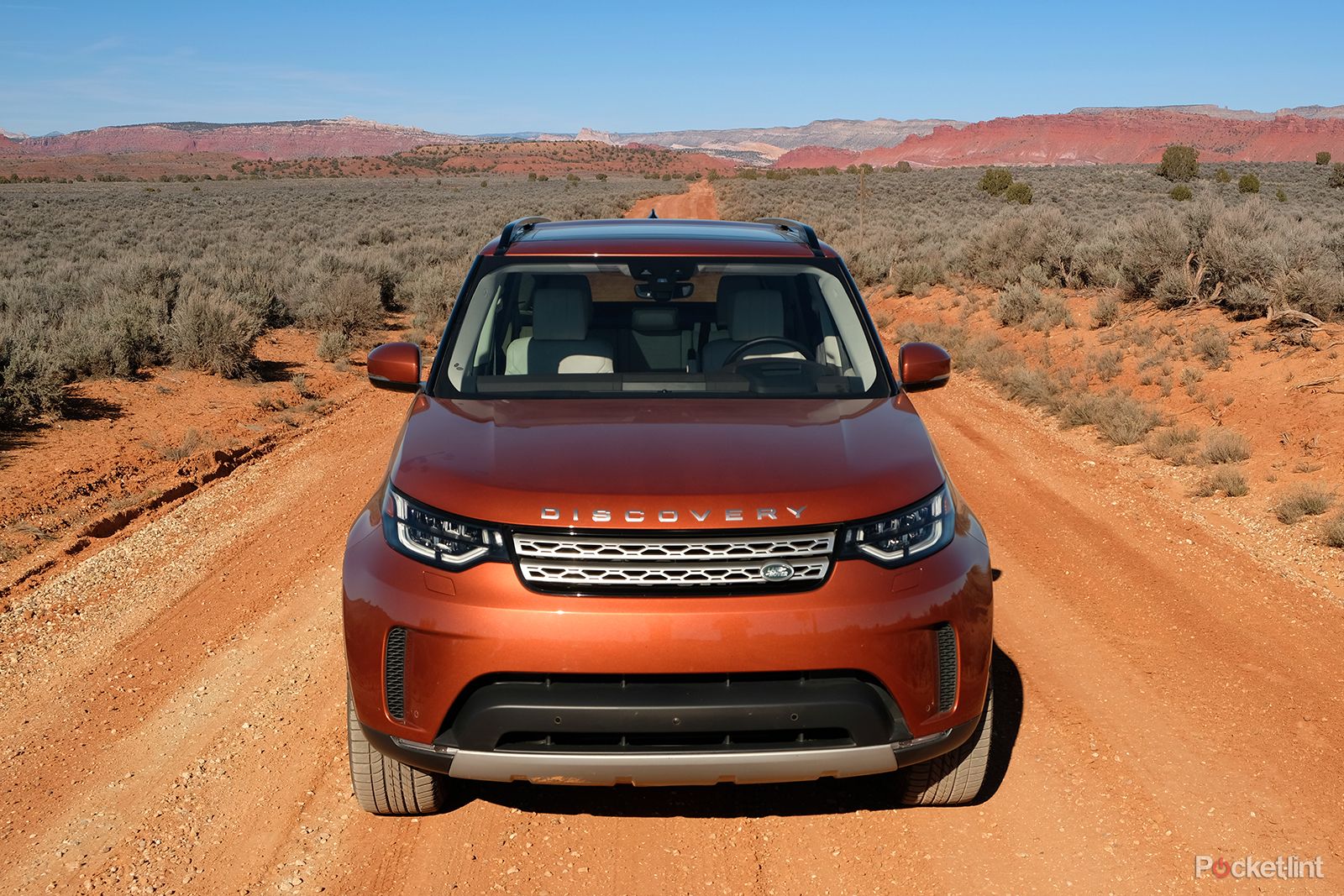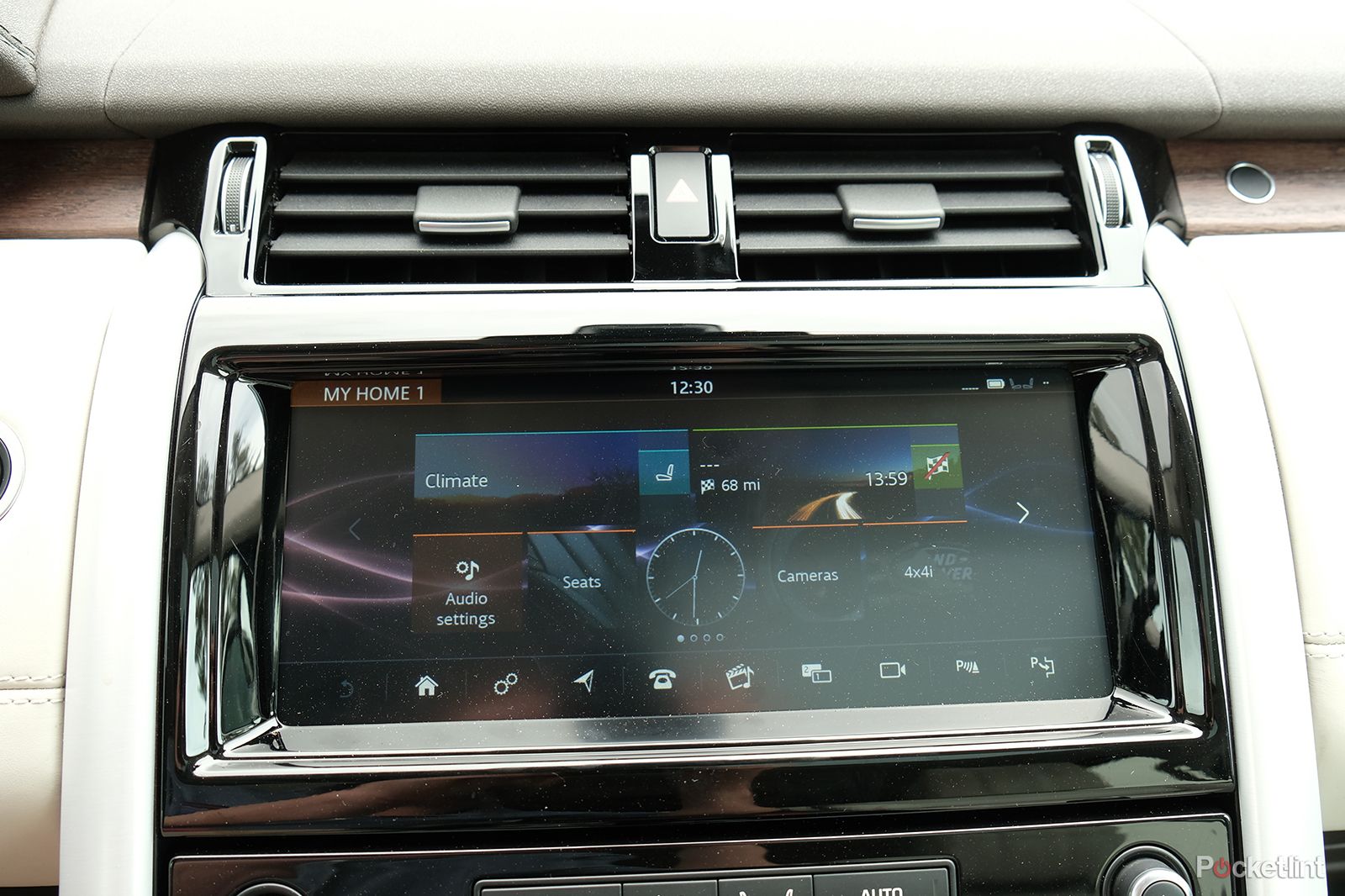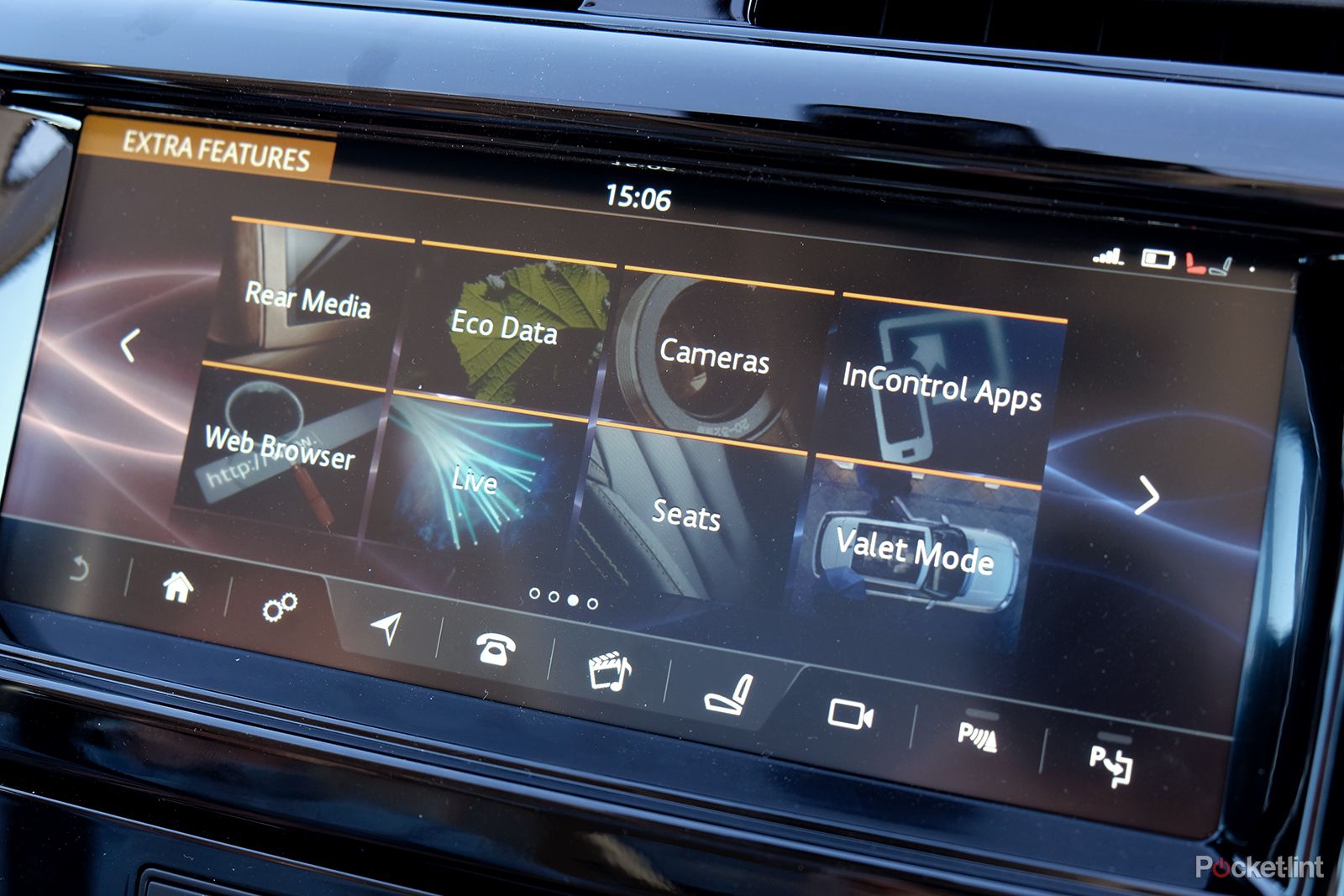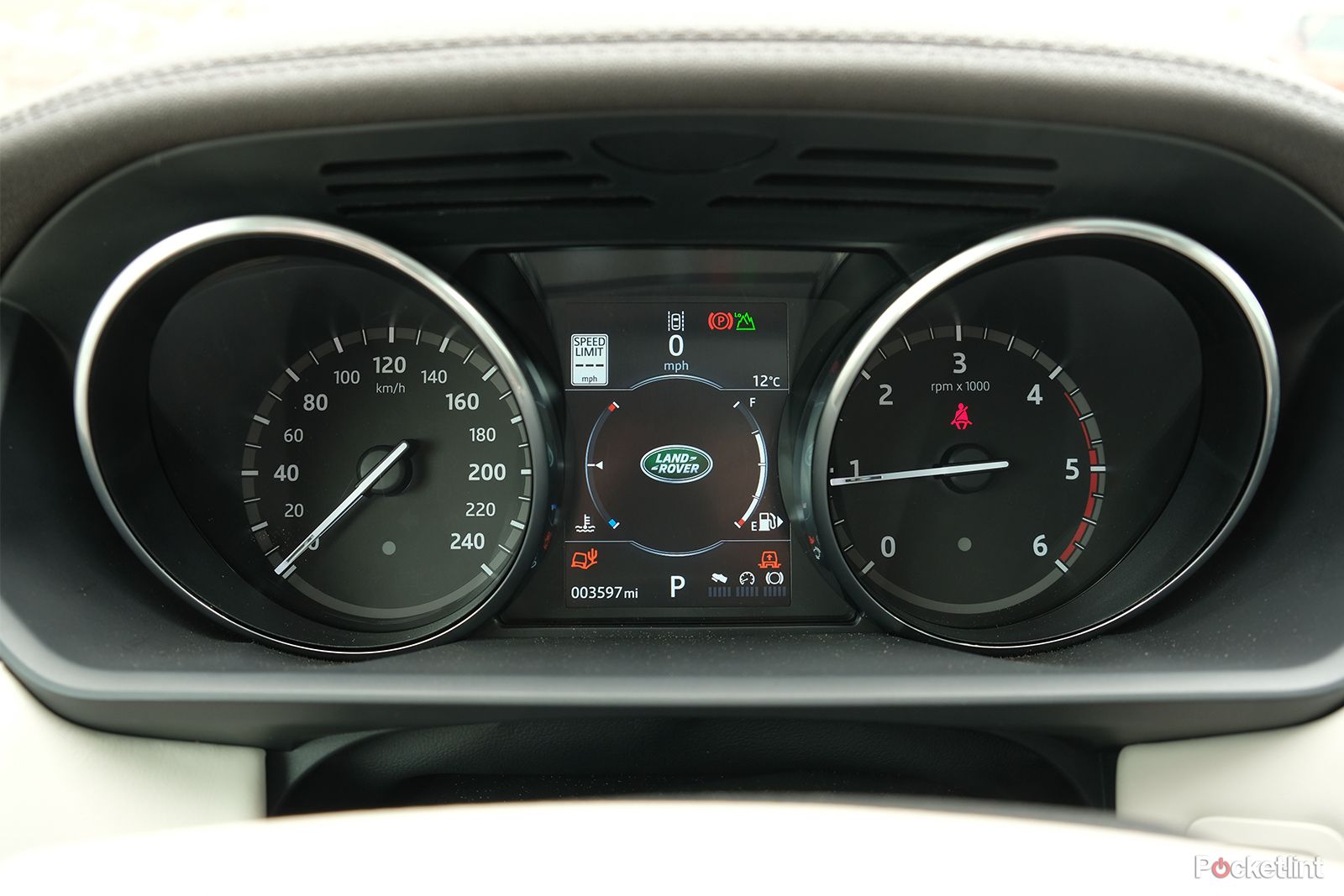There are soft-road SUVs. There are fashion SUVs. And then there's the Land Rover Discovery: a through-and-through SUV with all the proper 4x4 off-road bells and whistles you could wish.
Our quick take
In a world of Audi Q7 and Volvo XC90 the idea of buying a Land Rover might make you think "that's a bit too off-road, isn't it?". Sure, the Discovery is and always has been a capable off-roader, but in its 2017 guise it maintains that extreme capability, yet mixes it up with a striking design and oodles of on-road comfort and interior luxury to boot. Take all three of these 7-seaters side-by-side and, having driven them all, it's the Land Rover that comes out on top. We think it has the most exciting looks too.
The Discovery's weaknesses aren't precisely shortcomings either: the design is increasingly close to the Range Rover so there's risk of Jaguar Land Rover cannibalising its own market (but both look great); that rear end is going to be brought into question by various people; and the tech, while certainly abundant, can take some digging to get into the depths of it all. Oh, and let's not forget that with all the extras it might cost a wedge of cash more than the closest competition.
Otherwise the Land Rover Discovery is a fully versatile machine both on- and off-road. It'll eat Tarmac for breakfast and dirt tracks for dinner, lug the family about in just about any terrain the world happens to throw at it, all the while ensuring you look and feel good sat behind the wheel. It is, in short, the SUV king for 2017.
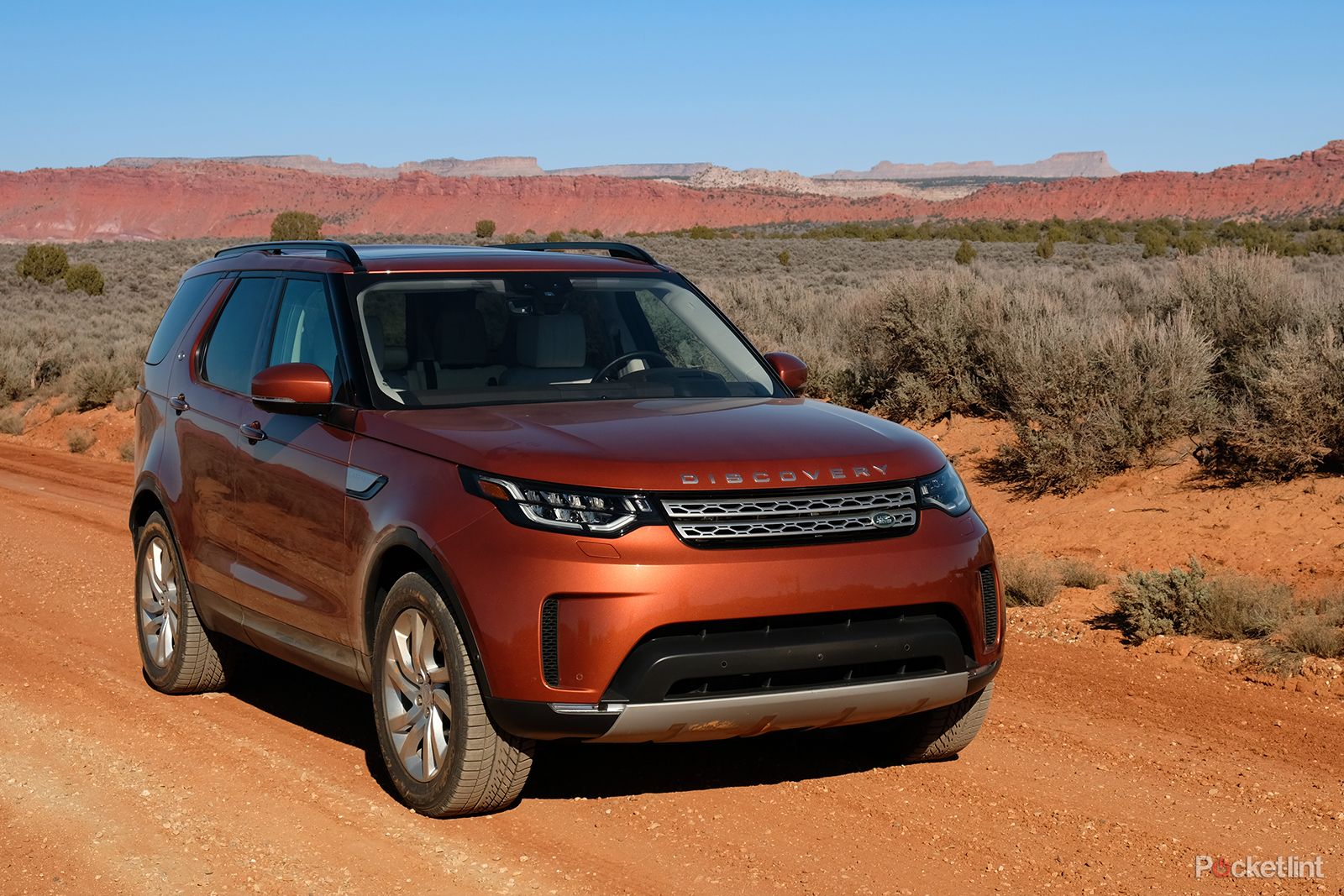
Land Rover Discovery (2017) - 5.0 / 5
| FOR | AGAINST |
|---|---|
|
|
For many, however, that's not what's going to sell the 2017 incarnation of this classic. First, the new Discovery looks like an alien race reimagined its exterior, creating a surefire head-turner (viewed from the front, at least, that rear might get looks for the wrong reasons); second, the Disco's full 7-seat layout means it's more than adept at karting the whole family around those country roads; and third, the interior is luxe enough so that you'll never feel like you're behind the wheel of a tractor.
But with the SUV sector now more competitive than ever - and with the likes of the Audi Q7 and Volvo XC90 perhaps more practical road options, not to mention the just-announced Range Rover Velar arguably cannibalising Jaguar Land Rover's own range - does the 2017 Discovery earn the crown of 2017 SUV king?
Land Rover Discovery 2017 review: All-new design
If you've ever seen a 2009 Discovery 4 on the roads then you won't need us to tell you the 2017 Discovery has an all-new design, from inside to out.
Some of what you can't see has a big impact to the design: the new Discovery is bigger than before, but also almost half a tonne lighter thanks to a predominantly aluminium construction. That's a whole family's worth of weight right there.
What you can't miss is the visually impactful exterior. Those squinty s-shaped front lights, the pulled-back nose, downturned bumper and bulging hips that cover the wheel arches but curve back in to give the upper body a more slender frame. Notice those front vents too: these position incoming air over the wheels to deflect surrounding air from causing excessive drag. It's not just a pretty face, it's a clever one too.
The side marries sharp lines with soft folds and flexes in the body work, but unlike the Range Rover Velar's dipped rear the new Discovery maintains its height - as is necessary for its 7-seat arrangement - and the back end, therefore, will be an area of contention for some. It's a bit broad-shouldered and square. Plus that rear downturned bumper looks a little sad, while the two-piece boot of the previous Discovery 4 has been switched for an all-in-one upward-opening piece (there's an interior tailgate, though). We don't mind the overall look, but almost everyone we've spoken to says "not sure about the rear". Each to their own.
As we've alluded to, the new Discovery is undeniably closer in design language to the Range Rover than ever before, blurring the boundaries more than ever before. That's not necessarily a bad thing: it depends if you want a 5-seater or a 7-seater to some degree; and if you're firmly fixated on the latter then we think the Discovery has the visual edge over the rounder Audi Q7's form and Volvo XC90's more conventional looks. The Land Rover offers five iosfix points, too, earning extra family points right there.
New Discovery review: True off-road abilities
We've tested out Land Rover's latest in all manner of conditions: up rock faces, through sandy deserts, over rough terrain and across American highways. And this thing is a destroyer: it'll eat up pretty much anything you care to throw its way, from Tarmac to dirt, mud and sand. It's not a 4x4 pretender, that's for sure - this is the confidence-inspiring real deal.
When dabbling in off-road the Disco is, well, a wonderful joyride. We could barely fathom the speed at which we went hurtling down desert dirt tracks without feeling the slightest of concern - and those lumps and bumps were munched up with little fuss. That's thanks to the fully independent double-wishbone suspension system and just how rapidly it can adsorb what's beneath the wheels.
As a proper 4x4, the Discovery offers special drive modes - general, grass, gravel & snow, mud & ruts, sand, rock crawl - in addition to low-range diff-lock for steep climbs and even all-terrain (ATPC) where the car crawls at a slow pace allowing you to focus on just the steering. These are easily selectable from a pop-up rotational dial or, in the case of the last two, individually assigned buttons to the centre. That suspension can adjust the ride height of the car for clearance too, to get through particularly perilous conditions. All with the tap of a button.
Not that, like any car, the Discovery is impervious to all terrain. On the final day of our four-day excursion, having covered hundreds of miles, we part deflated the tyres for some sand dune driving. And we're not talking special tyres here: just standard on-road ones. We've done so before in hardy pick-up trucks, such as the Toyota Hilux, and expected to get stuck in the sand a whole lot more than we did. We rode the throttle hard enough to keep things moving 95 per cent of the time.
Land Rover Discovery review: An everyday car
Back on Blighty's roads we're sure that most people aren't going to give much of a hoot about all that though. From the driveway to school drop-off tends to not be too perilous, right? The important factor to take away is how the new Discovery can transfer those off-road smarts to normal conditions. The suspension, for example, can clatter with a pot hole and you'll barely notice it up front (it's stiffer in the middle and back, mind, but still not too bad). This Land Rover is the embodiment of comfort and refinement on the road.
That air suspension has other uses too: hit the Elegant Arrival button and the car will lower itself upon coming in to park, making getting in and out easier for those who might struggle to take the big step up. Or, you know, those who like skinny jeans or a stride-limiting dress. Again, taking off-road skills and plying them to on-road ability; a great idea.
Should the weather take a turn for the worse and you live out in the sticks then, well, we'd like to see a VW Sharan get itself out of a sticky situation. No such problems for the Discovery, without the necessity to be an advanced driver: its on-board computer will deliver the necessary power the the correct wheels to avoid skidding on ice and so forth.
2017 Discovery review: Heaps of space and comfort
But it's the day-to-day driving that's just so darn easy. Sat behind the wheel, the double sunroof letting in boat loads of light, sunglasses firmly fixed to face and that eight-speed gearbox smoothly taking care of every transition, it's a calm and almost peaceful place to be.
There's loads of room in the back, too, with the middle three seats almost as comfortable as up front. The far back is a bit tighter, but as the middle row has independently adjustable seats it's easy to drop the centre one only for added leg space when accommodating six rather than seven adults.
Boot space is up to 2,500 litres if you fold all the seats down - which takes a mere 14 seconds per row via the electronic controls. In doing so there's enough space to almost lie flat. Just fold the back row down and the 5-seat setup means an ample 1,230 litres of space - or, in practical terms, a dog crate for the family pet.
Land Rover Discovery 2017 review: Engines and efficiency
We drove the 2-litre and 3-litre diesel options for this review, which in their four-cylinder engine arrangements don't sound especially capacious for such a car. But what they lack in pep - overtaking certainly doesn't feel of supercar pace, for example, even when in sport mode on the driver's dial - they make up for in efficiency and torque. That off-roading wouldn't be plausible without some super-strength in the bag; we even got six adults up relatively perilous desert hill tracks at nighttime without a hitch.
The critical part about that engine make-up is that Land Rover has opted for a four-cylinder engine - just like Volvo has in the XC90. That's important because it returns better mileage and isn't as environmentally murderous (JLR quotes 47.1mpg for the 2-litre, 44.8mpg for the 3-litre). Real-world mileage will be less, of course, but it's still good going compared to how poor it could be (the 3-litre V6 diesel and 3-litre petrol are more powerful, but the latter drops to an inconsiderable 26mpg).
2017 Land Rover Discovery review: Tech treats
As part of parent Jaguar Land Rover, the Discovery pulls the company's InControl Touch Pro system. It's a 10-inch touchscreen system to the centre column, within easy reach and responds well.
It's no "Blade" system, as per the Range Rover Velar, though. That's the company's holy trinity setup, which we didn't expect to see in the Discovery by any means. Perhaps a future facelift model will take that on board.
As it is, the InControl Touch Pro setup delivers a whole lot to your fingertips. Satnav, media, audio setup, climate control, seat control, rear media control (as applicable), efficiency and driving style data, and connectivity (there's a slot for a SIM card for on-the-go Wi-Fi). That's a whole lot of stuff and, frankly, that's one of the Discovery's downfalls (as it is in any Jag setup): there's so much to dig through that it can be a bit complex.
However, the Discovery doesn't force you to control everything through that touchscreen, which is a savvy decision. The presence of physical dials for climate control, heat seating/cooling and media is also just a short reach away. Cruise control, track skip and volume up/down are conveniently positioned on the driver's wheel - which explains why the physical volume knob is positioned so heavily towards the passenger side.
There are other quirks, too, including an Apple Watch and Android Wear app to allow remote interaction with the Discovery, plus enough USB and 12V sockets to power the techiest of families (and they're not all up front, they're positioned throughout ensuring all three rows are serviced).
Complexity doesn't thwart ability, though. Having lived with the Discovery for a couple of days we got used to its setup and learned its ins and outs sufficiently. And if we're citing this as an apparent negative then we only need to look back to our Volvo XC90 review - a car which more or less lacks any physical input controls and, as such, also can't be considered 100 per cent perfect.
To recap
The Land Rover Discovery is a fully versatile vehicle both on- and off-road. It'll eat Tarmac for breakfast and dirt tracks for dinner, lug the family about in just about any terrain the world happens to throw at it, all the while ensuring you look and feel good sat behind the wheel. It is, in short, the SUV king for 2017.

